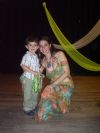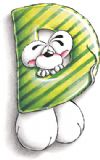|
ESL Forum:
Techniques and methods
in Language Teaching
Games, activities
and teaching ideas
Grammar and
Linguistics
Teaching material
Concerning
worksheets
Concerning
powerpoints
Concerning online
exercises
Make suggestions,
report errors
Ask for help
Message board
|
ESL forum >
Ask for help > a problem with context!
a problem with context!
|

miss_alejandra

|
a problem with context!
|
hello dear friends,
i�m asking you for help about how to provide a context for 8 - 9 children to learn vocabulary about furniture in a house. I�m attending didactis, and my teacher does not want any traditional poster about rooms in a house, and i have to find a creative context to plan the class for these children. thanks in advance, any suggestion will be appreciated.
|
25 Jun 2012
|
|
|
|

ingilizcecimiz

|
|
Hello Miss_alejandra,
I believe that it may be useful if you first make a list of furniture items that you will teach. Then you can use scrap paper and make the miniatures/models of the items that are possible for you. Or may be you can ask your students to make them. Then, you can draw parts of a house on a big piece of paper and decorate that house together with your students and guide them learn the names of these pieces of furniture. Regards, Hasan |
25 Jun 2012
|
|
|

miss_alejandra

|
i loved the idea you posted! thank you veru very much !
|
25 Jun 2012
|
|
|

Rocilito

|
|
You can use a story as well, such as, Goldilocks and the three bears, you can adapt it to you specific needs. Then you can ask questions such as Where was the porridge? In the bedroom?" So as to elicit dinig room or kitchen from the students :P
Have a look at:
I usually tell it with some paper puppets I�ve prepared and move the puppets in a toy house I have as I tell the story. This is very graphic for them, they have a contexts, which is the story, they love toys, and you can emphazise wat you want and when you want to emphazise it. Good luck!! |
25 Jun 2012
|
|
|

Kita19

|
|
Hi there!
Hasan �s idea of building the miniatures is very good and a great alternative to a poster with the rooms! But if you haven �t got much time to do it, there are other possibilities. I don �t know if you have a mascot in your class. It �s always nice to have a toy pet (for example) to introduce vocabulary to children and to build a context familiar to children. I have a frog puppet, which I use to introduce basically any new topic. If you don �t have one, I think it �s never too late to start ;) You can present the puppet to the children (at this stage you can revise the basics "What �s your name?", "My name is...") and then introduce his house.
With furniture, to make the context, I presented the frog �s house with the rooms (a house made of cardstock with the different rooms) and, after the rooms are more or less acquired, I taught some furniture. I used flashcards to introduce the vocabulary and then played some games and a song I have made myself (  ).
I printed the furniture pictures in a small size and stick them on the blackboard. Then a student comes to the front and I ask, for example: "Put the table in the bathroom, please.". This way, the student had to pay attention to the furniture and the room. And the funnier combinations, the best (a toilet in the kitchen, for example!  ).
The idea of getting your students to draw the furniture in a house is also very good. You can ask them to draw some furniture they have in their own house and label them.
Here you have some links where you can see some ideas to build a house to put furniture (or use to make a context with flashcards):
The house I made is not like these, it �s made of cardstock with flashcards to make the rooms and it has "walls" glued at both sides of the house (two pieces of cardstock) that make the outside of the house. I don �t know if I �m being clear... :S it �s not easy to explain. If you want, I can take a picture and send it to you, just let me know. The students see that the house "opens" and are always eager to know how it is inside! ;) (Good motivation, hum? lol).
Games you can use afterwards:
I hope this helps.
Hugs from Portugal,
Patricia |
25 Jun 2012
|
|
|

MarionG

|
|
Since the furniture subject tends to be one of the less interesting ones to teach I have turned it into a creative project for some years in a row now and it works well. First I teach them the vocabulary (usually with flashcards, plenty available here). After I teach them the difference of There is/There are I am ready for the creative part. I give them loads of furniture catalogues (usually IKEA since they are easy to get here) and tell them they have one hour to choose whatever they want without having to pay for anything. I give them an A3 format heavy duty paper sheet and in that one hour they can design their dream room (usually I allow them to work in pairs). Towards the end of the class i will "announce" that the store is about to close in a few minutes..The next lesson they have to describe their room, using the furniture vocabulary they learned as well as the There are/there is structure. Stronger kids also add adjectives. The good thing about this is that is allows kids of all levels to work to their ability (There is a bed. There is a big bed. There is a big yellow bed with a red pillow. There is a big yellow bed with a red pillow next to the... etc. etc. ) and more often than not kids will want to use furniture or items they didn �t learn yet which expands there vocabulary in a natural way. I always hang all the "rooms" in the corridor for everyone to see with a big sign saying "fourth grade interior design" The feedback has generally been very good. Hope this helps |
26 Jun 2012
|
|
|

manonski (f)

|
I use a unit from one of the textbooks we have.
We start by reading the Old Woman Who Lived in a Shoe. (ice breaker activity)
Then we do activities to learn the vocabulary of house objects and rooms. ( you can find plenty of those here) and the grammar points "there is / there are and prepositions"
As a final task, students have to invent a new house. They are split up in groups of about 4. Together they have to decide the shape or their new house (flower?, soccer ball?, ice cream cone?...), how the house is going to be divided and who is responsible for which room.
They use construction paper to make a medium size poster of their house. They are each responsible to do a written description of their room and finally they present it to the rest of the class.
|
26 Jun 2012
|
|
|
|
|